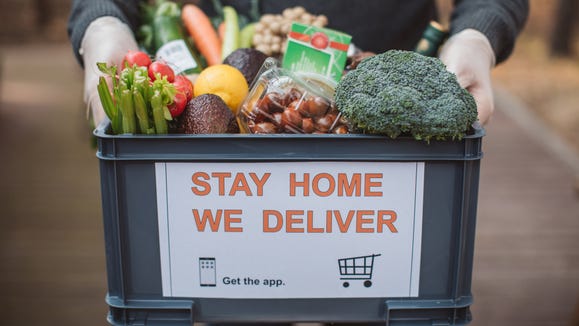Online grocery shopping will be here to stay following the pandemic, but the food supply industry will need to get creative when marketing products.

As North Americans hunkered down throughout 2020 for the COVID-19 pandemic, they turned to online shopping. For years it had grown in popularity for buying clothes and other household items, but grocery shopping hadn’t caught on yet. During the pandemic that changed with shoppers rushing to use curbside pickup and delivery to get food in their pantries.
“The average shopper is now getting used to shopping online, they’re doing it more often, they’re placing a lot of orders and whereas food seem to be the laggard, they are jumping in on food all over the place,” Michael Sansolo, a retail food industry expert, says during a presentation on pandemic supermarket trends at the virtual Potato Expo on Jan. 6, 2021.
Ecommerce sales at grocery stores skyrocketed during the pandemic. In 2019, there were US$1.2 billion in ecommerce sales, which jumped to US$7.2 billion as of June 2020, Sansolo explains. While this trend was driven by the pandemic, Sansolo expects it to continue as shoppers have become familiar with online shopping, and the convenience of it will continue to appeal to busy millennials and Gen Z shoppers.
However, there are marketing challenges when it comes to online grocery shopping. Instore shopping allows customers to see product displays, but with online shopping that isn’t an option.
“We have to be prepared to turn a lot of our thinking on its head. We’re coming through a crazy period. We’ve got to think differently. We’ve got to prepare for a store that may look remarkably different,” Sansolo says.

Sansolo recommends all levels of the supply chain work together, from growers, to processors/packers and retailers, to find ways to market and share products with the general public. This could be though sales, sharing more information about where products come from or even sharing recipes on websites such as Pinterest.
Online sales weren’t the only shakeup the grocery industry witnessed — the pandemic also saw food hoarding happening. Grocery store shelves were wiped clean as shoppers loaded up on food to make it through the pandemic, however some products were more in demand than others.
“A lot of supermarkets are going to look at their inventory, they’re going to look at their variety and say, are we stocking the right stuff? Do we have too much of things that people don’t want and too little of the things they absolutely have to have?” Sansolo says.
The pandemic is forcing grocery stores to reflect on their supply situations, he explains. He expects they will examine their supply chains to make sure they’re able to quickly restock needed products if a situation of this kind happens again.
“I would imagine a lot of you folks, whether you’re a farmer, whether you are a manufacturer of potato-based products, you’re going to hear from retailers saying how do we ensure that we have a supply chain that can deal with whatever we need to deal with,” he says.

